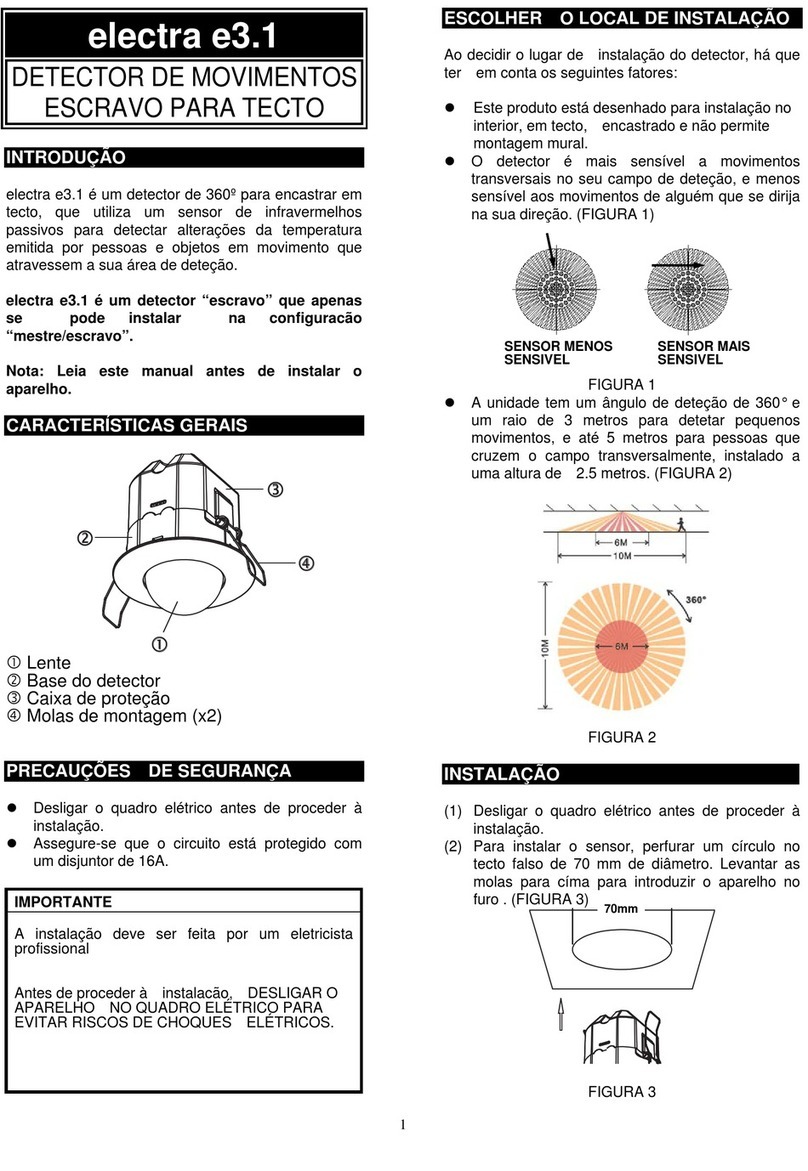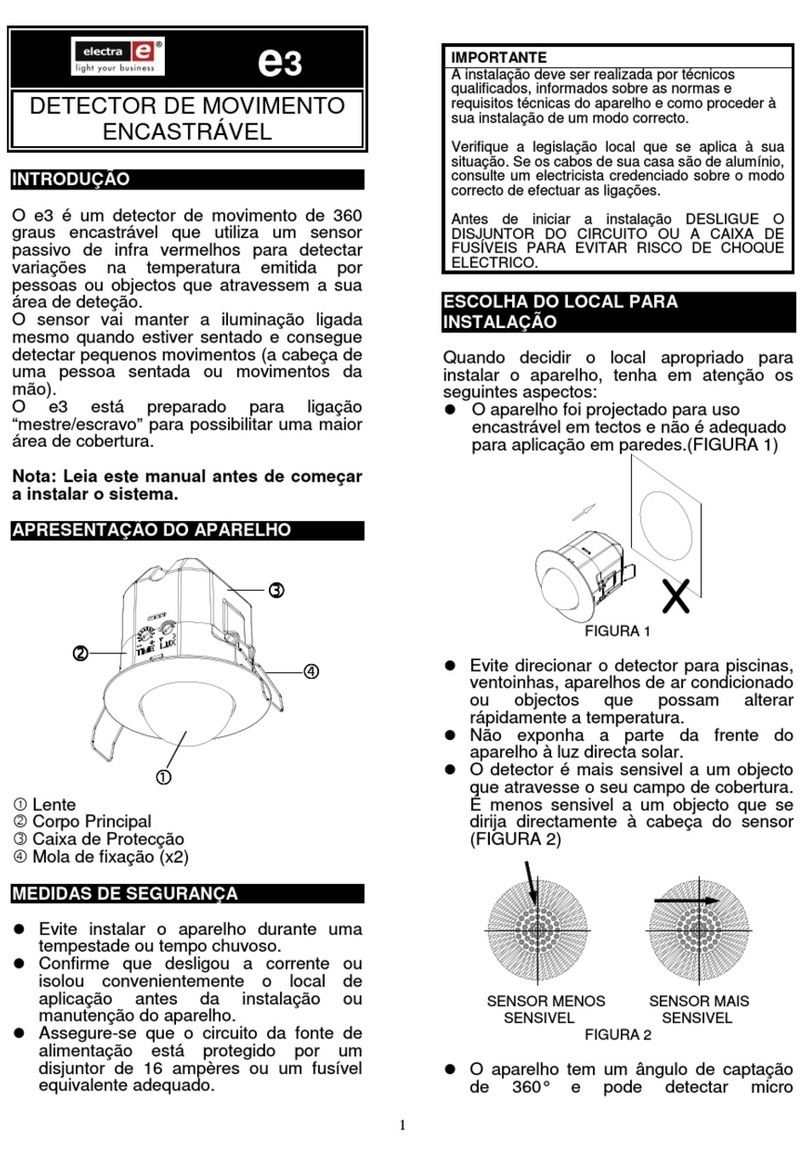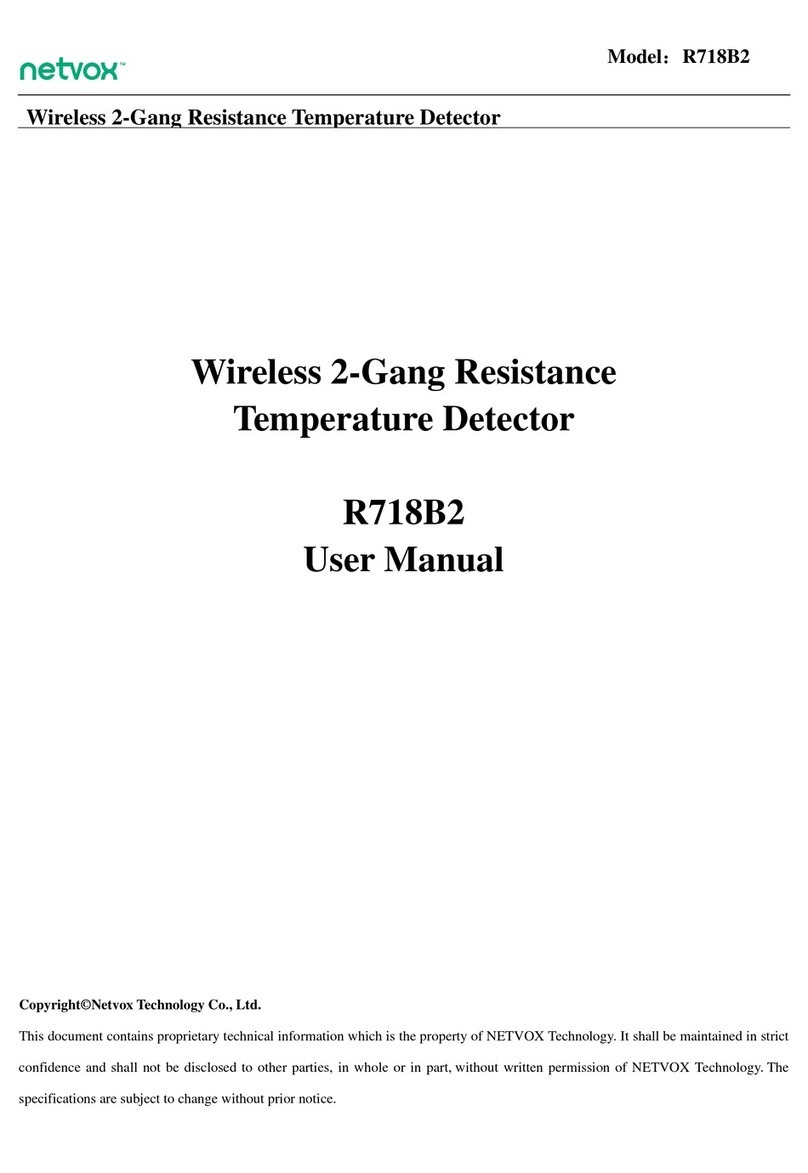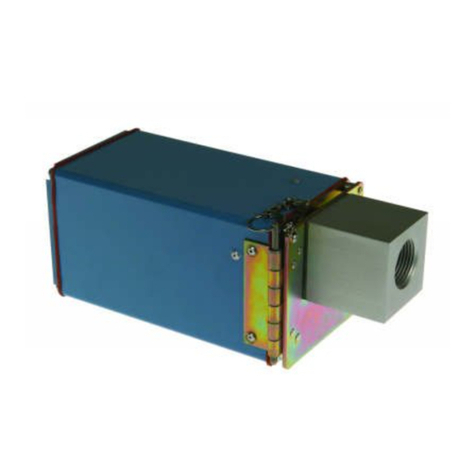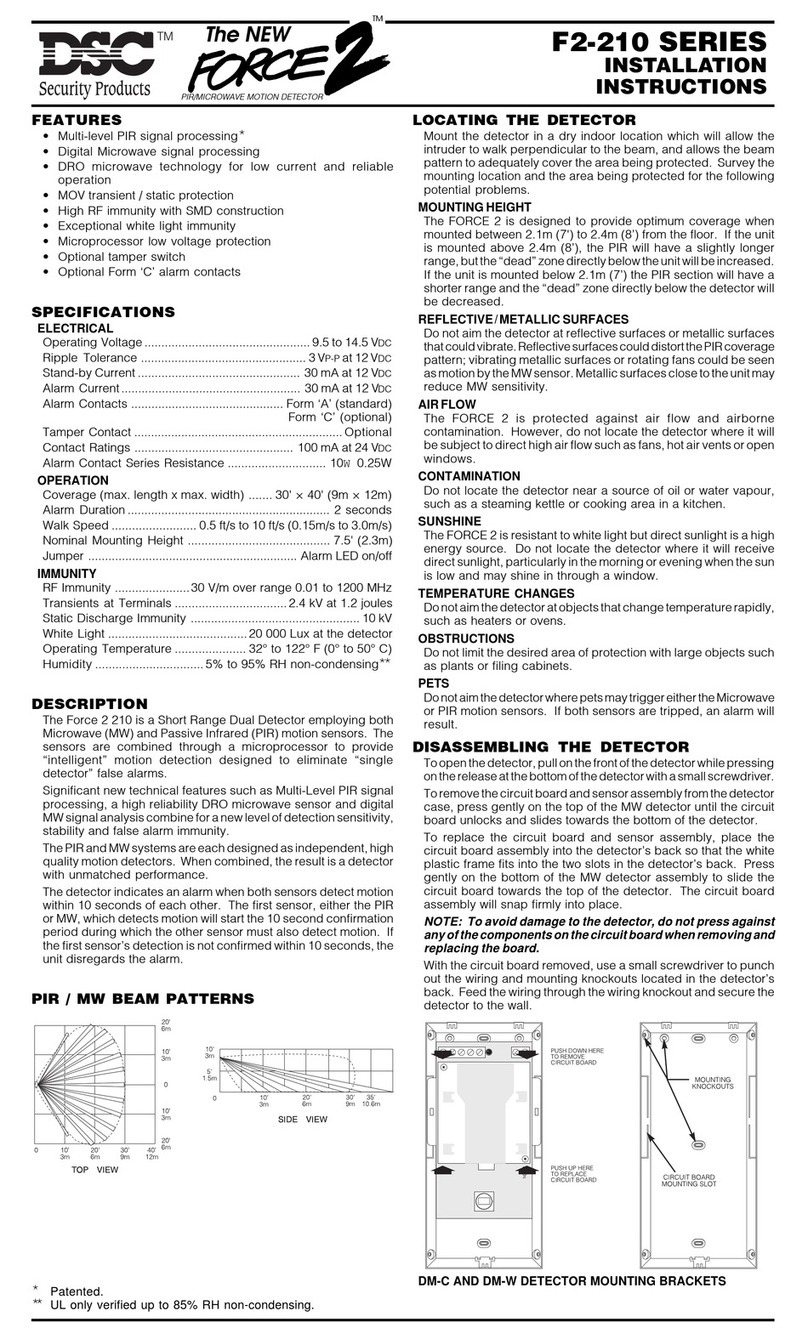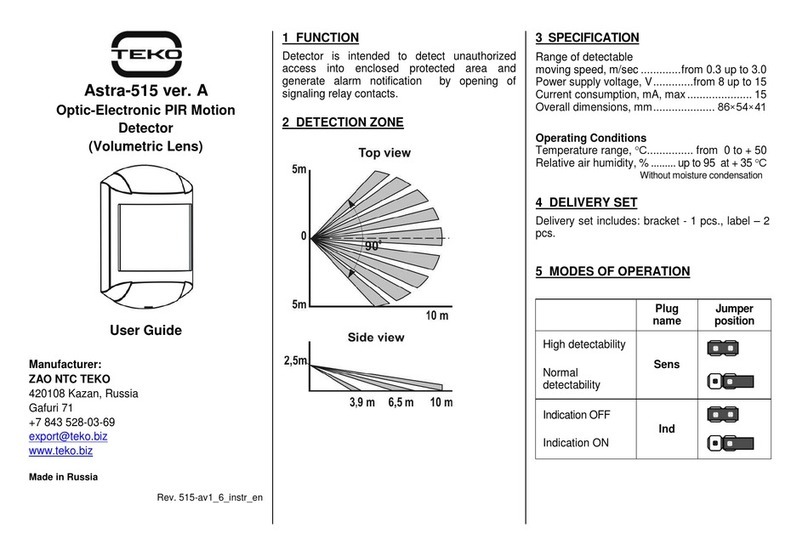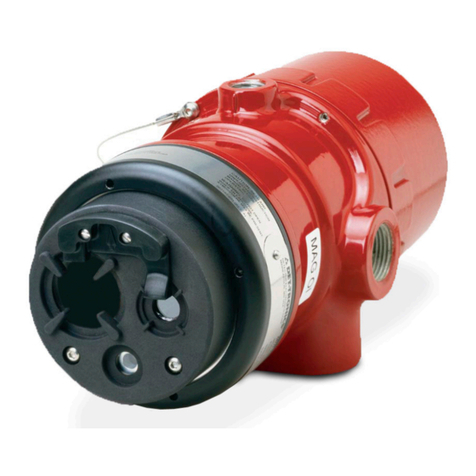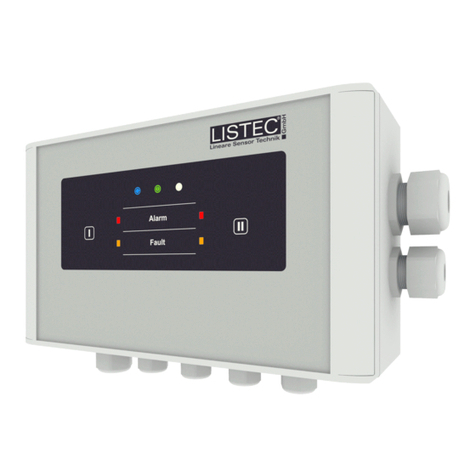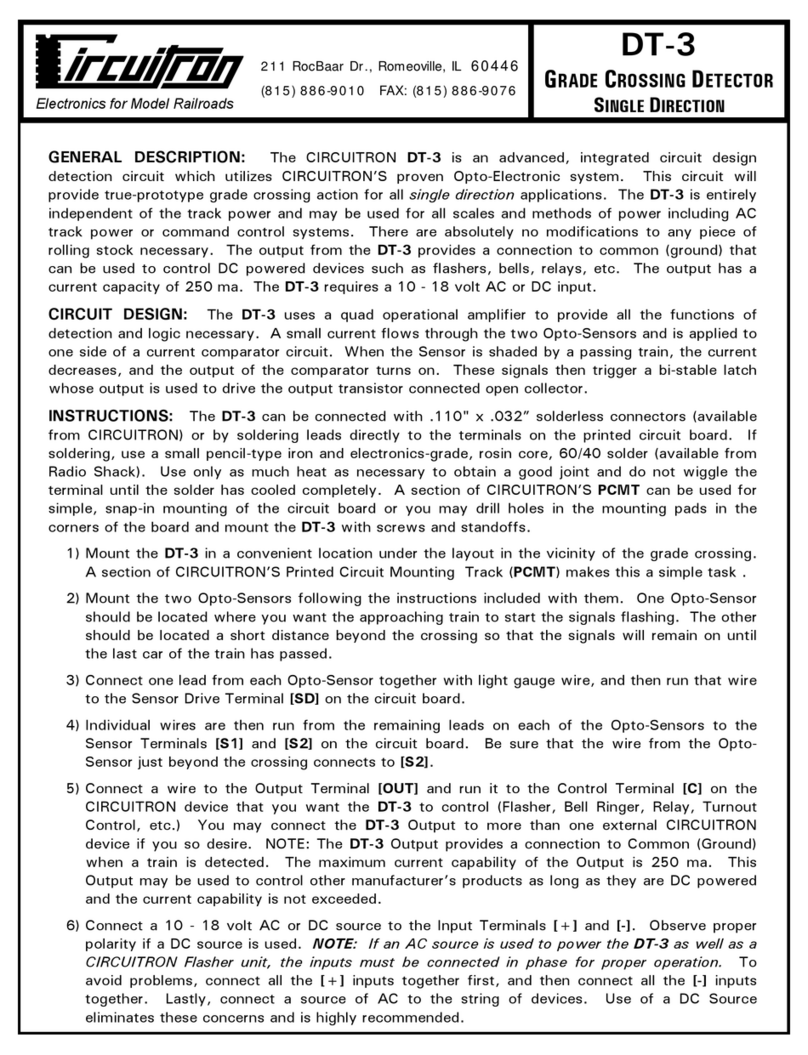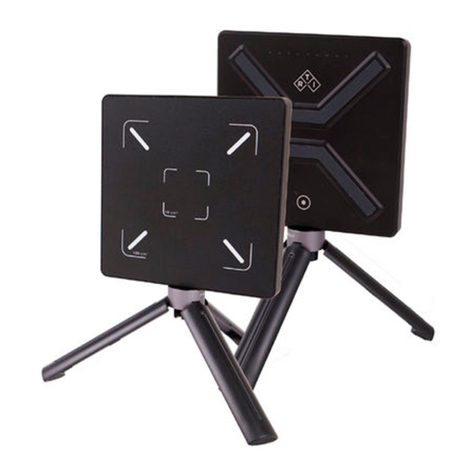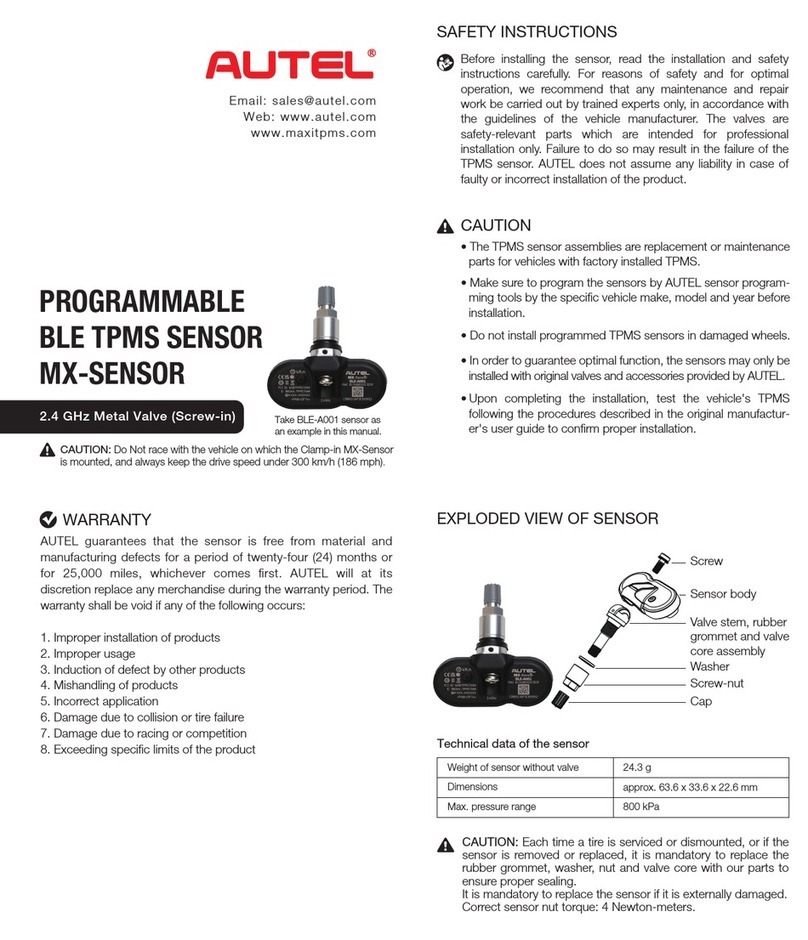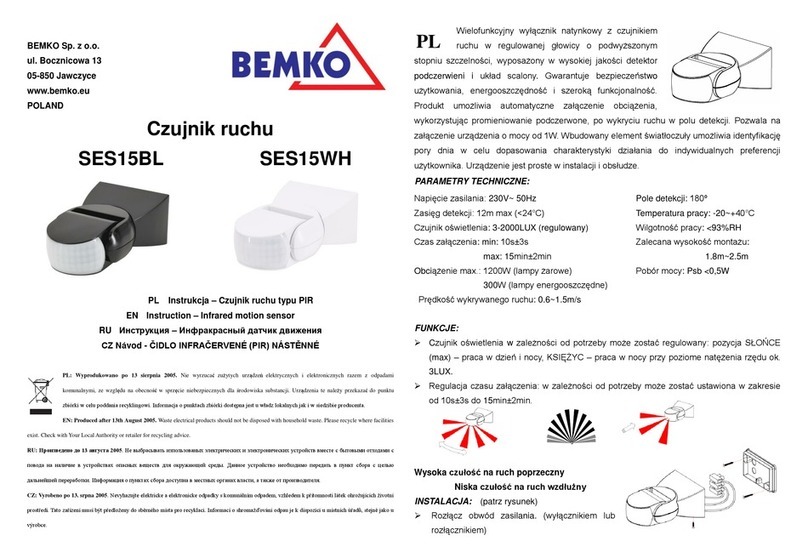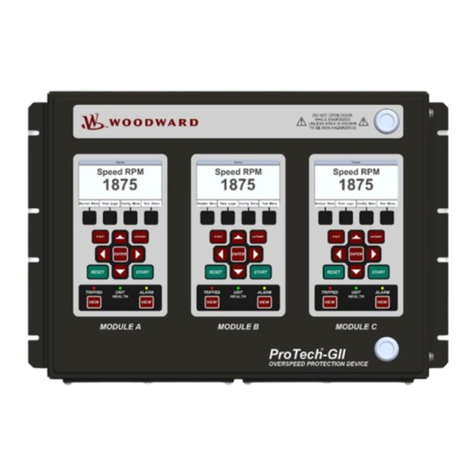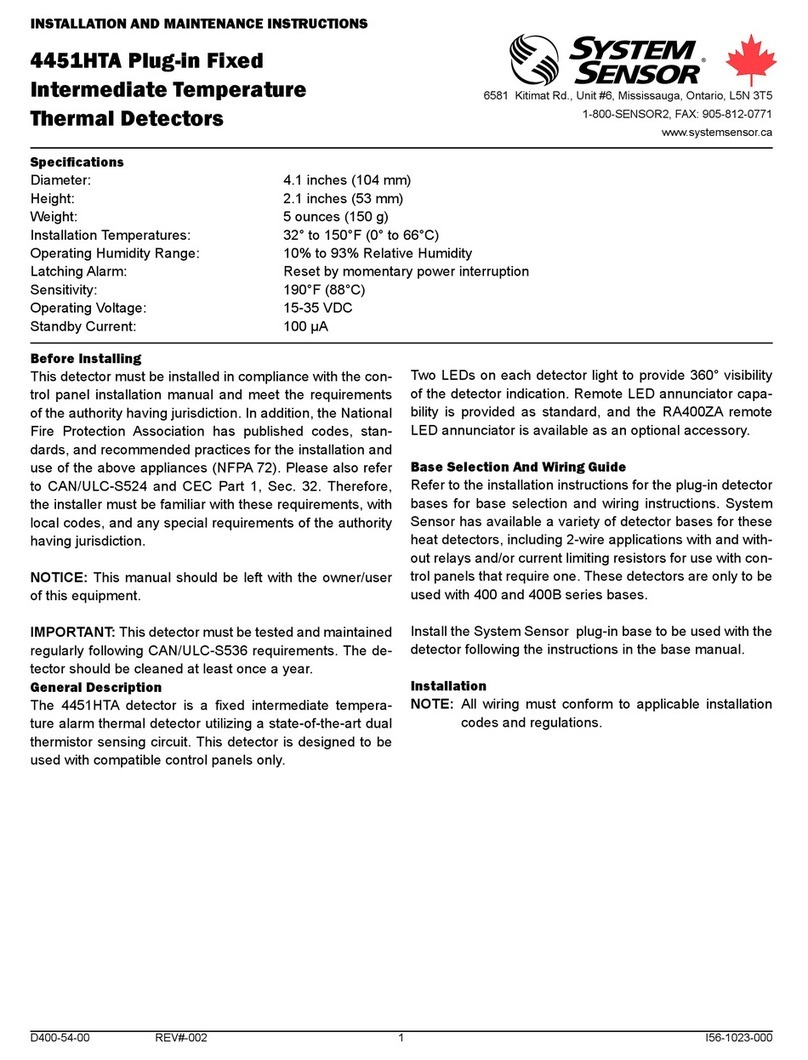Electra e11 User manual

1
e11
Detetor de movimento PIR
com
LUZ NOTURNA LED
①Detetor de movimento PIR
②Luz noturna Led
③Caixa de ligações
④Ajuste de Tempo & Lux
⑤Suporte ajustável para montagem no teto
INTRODUÇÃO
O e11 é um detetor de movimento multifuncional, ao
crepúsculo uma luz de cortesia e de segurança é
ativada automaticamente. À noite, a luz noturna LED
vai oferecer brilho suave em torno da casa para sua
segurança, ela irá desligar automaticamente no início
da manhã para poupar energia. O sensor de
movimento infravermelho passivo (PIR) incorporado
ativará a carga de iluminação principal somente
quando detetar movimento dentro da área cobertura.
As configurações ajustáveis de tempo e LUX
permitem que você selecione quanto tempo e quando
a luz permanecerá acesa após a ativação do PIR.
Nota: Leia todo o manual antes de começar a
instalar o produto.
PRECAUÇÕES DE SEGURANÇA
Evite instalar o aparelho quando chover.
Certifique-se que desligou a alimentação antes
da instalação
Certifique-se de que o circuito de alimentação é
protegido por um disjuntor de 16 amperes ou
fusível equivalente.
Esta unidade só pode ser instalada na vertical
(VER FIGURA 1a), NÂO NA HORIZONTAL (VER
FIGURA 1b).
FIGURA1a&1b
IMPORTANTE
Correntes elétricas fluem através do corpo
ao entrar em contato direto ou indireto com
componentes vivos, isso pode resultar em choque
elétrico, queimaduras ou mesmo a morte.
A
instalação deve ser realizada apenas por
técnicos qualificados que estejam informados sobre
as normas e requisitos técnicos do aparelho e sua
instalação adequada.
A
fonte de luz contida neste aparelho só deve ser
substituída pelo fabricante ou pelo seu agente de
serviço ou por uma pessoa qualificada.
Antes de proceder à instalação
DESLIGUE A CORRENTE DO CIRCUITO DE
ILUMINAÇÃO NO DISJUNTOR OU CAIXA DE
FUSÍVEIS PARA EVITAR CHOQUES
ELÉCTRICOS.
ESCOLHER LOCAL DE MONTAGEM
Para obter os melhores resultados, instale o
detetor numa superfície solida.
Altura recomendada para instalação na parede,
1.5 a 1.8m.
Altura recomendada para instalação no teto, 2.0
a 3.0m uso recomendado do suporte ajustável
fornecido.
Para instalação ao ar livre, recomenda-se um
local sob beirais.
Evite montar o detetor junto de fontes de calor, ar
condicionado ou objetos que possam mudar a
temperatura rapidamente.
Não permita que a luz solar incida diretamente
no corpo ou na parte frontal da unidade
Evitar apontar o detetor para árvores ou arbustos
que possam bloquear o movimento humano, o
movimento de animais de estimação pode ser
detetado com frequência.
O detetor é mais sensível quando apanha no seu
raio de visão um objeto a deslocar-se
transversalmente. É menos sensível quando o
objeto se dirige diretamente para a cabeça da
unidade. (FIGURA 2)

2
Menos sensível mais sensível
FIGURA 2
INSTALAÇÃO
Uma maquina de furar e uma chave de fenda são
necessários para a instalação. Selecione um local
para que a unidade tenha a melhor cobertura de
deteção, o dispositivo fornece até 12 metros de
distância na linha central no máximo e um angulo de
abertura de 180˚na altura recomendada de 1,8
metros como mostrado na FIGURA 3.
FIGURA 3
Instale um interruptor de parede adjacente à fonte de
alimentação. (FIGURA 4) Isso ajuda a operar o
FUNCIONAMENTO AUTOMÁTICO e o MANUAL
OVERRIDE com facilidade. Consulte a seção
OPERAÇÕES para mais informações.
FIGURA 4
INSTALAÇÃO
(1) Desligar a alimentação CA ou disjuntor.
(2) Desaperte a tampa inferior, utilizando uma chave
de fenda de cabeça plana. (FIGURA 5)
FIGURA 5
(3) Descarne aproximadamente 6-8mm de
isolamento dos fios do cabo de alimentação.
Antes da conexão, passe os fios pelo selo de
borracha fornecido.
(4) Para ligação do cabo de alimentação, ligue o fio
(preto) de fase à marca "L" do bloco de terminais.
Conecte o fio (azul) fio neutro à marca "N" do
bloco de terminais,
Para a conexão do fio da lâmpada, conecte o fio
azul à marca "N" do bloco de terminais, conecte
o fio preto à marca do terminal "LS". (FIGURA
6).
FIGURA 6
(5) Para montagem na parede, faça uso da tampa
da base como modelo para marcar a posição dos
furos. Fixe a tampa da base na parede usando
os parafusos e buchas fornecidos (FIGURA 7),
aparafuse a parte inferior para fixar a unidade
(FIGURA 8).

3
FIGURA7
FIGURA8
(6) Para montagem no teto, utilize o suporte
opcional como modelo para marcar a posição
dos furos, seguindo os passos abaixo para
instalação no teto:
1:. Use uma chave de fenda plana para apertar a
junta do suporte (veja o desenho FIGURA 9).
2:. Aparafuse o suporte na superfície do teto (ver
desenho FIGURA 9)
3: Deslize o detetor para dentro do suporte de
forma a que este fique seguro (veja o desenho
FIGURA 9)
FIGURA9
4: Gire o suporte para trás para ajustar a posição
do detetor para a posição de deteção preferida
(FIGURA 10)
FIGURA 10
Nota: o ângulo máximo ajustável é de 45˚
A junta do suporte pode afrouxar depois de
alguns ajustes, use a chave de fenda de lâmina
plana para apertar a junta do suporte novamente.
Se quiser remover o detetor do suporte, basta
levantar o identificador na parte traseira do
suporte um pouco com o polegar e, em seguida,
extrair a unidade do suporte
(FIGURA11).
FIGURA 11
TESTE / AJUSTE DE CONFIGURAÇÕES
(1) TESTE O DETETOR
Rode o botão LUX e o botão TIME no sentido
anti-horário para a marca "T", que é a posição
TESTE. (FIGURA 12).
FIGURA 12
Ligue o interruptor da parede. A luz começa a
aquecer durante 1 minuto, após o que volta
automaticamente ao funcionamento normal.
Durante um período de aquecimento de 1 minuto,
a luz permanecerá acesa.
Percorra a área de deteção. A luz acende
quando você movesse e desliga quando você
parar. Aguarde até que a luz se desligue antes
de se mover novamente para testar o sensor.
(2) AJUSTE DO TEMPO
O ajuste TIME controla quanto tempo a luz
permanecerá acesa após o movimento ter sido
detetado.
Rode o botão TIME no sentido horário para aumentar
(até cerca de 12 minutos) o tempo de permanência ou
no sentido anti-horário para diminuir (até cerca de 5
segundos) o tempo (FIGURA 13).
Cerca de 5 segundos Cerca de 12 minutos
FIGURA 13

4
(3) AJUSTE DA LUMINOSIDADE (LUX)
O ajuste LUX determina em que nível de brilho a luz
ligada se acenderá quando você definir o detetor para
modo automático.
Por exemplo, rode o botão LUX no sentido dos
ponteiros do relógio para a posição LUA (FIGURA 14)
e a luz acende-se apenas com pouca iluminação
(abaixo de 20 Lux).
Para ajustar a luz ambiente preferida num nível mais
alto, basta girar lentamente o botão LUX no sentido
anti-horário para aumentar a configuração Lux.
Continue criando movimento durante o processo.
Quando a luz está acesa, significa que o nível Lux
preferido está definido.
A gama de Lux ajustável é de cerca de 20 - 300 Lux.
Defina a configuração Lux de acordo com suas
necessidades.
FIGURA 14
OPERAÇÃO
Se ligar um interruptor de parede externo ao seu E11,
você poderá operar o detetor em modo manual ou
automático quando desejar.
(1) MODO AUTOMATICO
Ligue o interruptor de parede; quando o sensor deteta
movimento, a luz acende automaticamente de acordo
com o nível de brilho ambiente definido pelo botão
LUX.
(2) MODO MANUAL OVERRIDE
Pode substituir o detetor para manter a luz acesa
independentemente do movimento, basta ligar e
desligar duas vezes dentro de 4 segundos para entrar
no modo. O intervalo entre a primeira e a segunda
operação deve estar dentro de 0,5 - 2 segundos.
No modo Manual Override, a luz permanecerá acesa
por cerca de 4 ~ 6 horas, apesar de não existir
movimento; Em seguida, a luz irá desligar e o sensor
de movimento volta ao modo automático.
Os utilizadores também podem ajustar o detetor de
volta para Operação Automática pressionando o
interruptor da parede por pelo menos 10 segundos e
depois ligá-lo novamente.
SOLUÇÃO DE PROBLEMAS
A luz não acende:
Verifique a ligação.
Verifique se o interruptor de parede esta ligado.
Verifique se a carga ligada esta boa.
Verifique se a configuração LUX esta correta.
Luz fica acesa:
Confirme que ligou bem a unidade
Confirme que a configuração do TIME está
correta
Luz de noturna fica a piscar:
Verifique se há qualquer proteção na frente do
detetor para causar reflexão de luz, remova a
proteção ou mude o local de instalação.
ESPECIFICAÇÕES
Alimentação AC 100V ~ 240V, 50Hz/60Hz
Carga Máxima 1000W incandescente
400W Fluorescente
150W LED’s or CFL’s
Luz noturna AC 100V ~ 240V, 50Hz/60Hz,
0.5W
Angulo de deteção 180° (20°C)
Distancia de deteção 12m ( 20°C)
Ângulo ajustável do
suporte opcional Até 45 ° para cima/baixo a
cabeça PIR para o foco da
área de deteção
Altura de montagem
1.5 a 1.8m para aplicação em
parede
2.0 a 3.5m para aplicação em
teto com suporte ajustável
fornecido
Operação do detetor Automático/Manual Override
Tempo de ajuste Aprox. 5 seg a 12 min
Lux de ajuste Aprox. 20 a 300 Lux
Aquecimento 1 minuto.
Classe de proteção II
Grau de proteção IP54
Segurança CE
*As especificações estão sujeitas a alterações sem aviso prévio.
A501112554R
AVISO:
Não deite fora as unidades elétricas junto com o lixo
normal. Use sempre os recipientes de acordo.
Contacte os centros de recolha para o efeito ou pode
sempre devolver a unidade onde a adquiriu.
Se os produtos elétricos forem lançados nos campos
estes poderão verter componentes que irão
contaminar o solo e águas e futuramente prejudicar a
sua saúde.
Quando substituir aparelhos antigos por novos a loja
terá de aceitar as unidades antigas sem qualquer
custo.
www.electra.pt

5
e11
Security PIR Motion Sensor
plus
LED Night Light
⑥PIR sensor
⑦LED night light
⑧Wiring port
⑨TIME & LUX setting knobs
⑩Adjustable bracket for ceiling mount
INTRODUCTION
e11 is a multi-functional security motion sensor plus
dusk to dawn LED night light, it is a fully automatic
indoor and outdoor security/courtesy light controller.
At night time, LED night light will turn on to offer soft
brightness around the house for safety, it will turn off
automatically in the early morning to save the energy.
The built-in passive infrared (PIR) motion sensor will
turn on the main connected lighting load only when it
detects motion within the coverage. Time and LUX
adjustable settings will let you select how long and
when the light will stay on after PIR being activated.
Note: Read this entire manual before you start
installing the device.
SAFETY PRECAUTIONS
DO NOT install this motion sensor in outdoor
when it is raining.
DO isolate the power supply during installation or
maintenance.
DO ensure that the power supply circuit is
protected by a 16 amp circuit breaker or suitable
equivalent fuse.
The unit can be installed only vertically (see the
FIGURE 1a), not horizontally (see the FIGURE
1b).
FIGURE1a&1b
IMPORTANT WARNING
Dangerous currents flow through the body
when coming into direct or indirect contact with live
components, this can result in electric shock, burns
or even death.
Installation must be performed by skilled
technicians or specialist who are informed about the
standards and technical requirements of the
appliance and its proper installation.
The light source contained in this luminaire shall
only be replaced by the manufacturer or his service
agent or a similar qualified person.
Do not attempt installation unless you have some
experience with household wiring.
Before proceeding the installation and disassembly,
TURN OFF THE MAINS POWER TO THE
LIGHTING CIRCUIT
A
T THE CIRCUIT BREAKER
OR FUSE BOX TO AVOID ELECTRICAL SHOCK.
CHOOSING A MOUNTING LOCATION
For the best results, fix your motion sensor on a
solid surface. For wall mounting, 1.5~1.8m
above the ground is recommended. For ceiling
mounting, 2.0~3.0m above the ground is
recommended to use the optional swivel bracket.
For outdoor installation, a location under eaves is
recommended.
Avoid aiming the motion sensor at direct-sunlight,
pools with sunlight reflection, heating vents, air
conditioners or objects which may change
temperature rapidly.
Do not allow sunlight to fall directly on the front of
unit.
Try to avoid pointing the unit at trees or shrubs or
where may block the human movement or the
motion of pets may be detected frequently.
The motion sensor is more sensitive to objects
moving across its field of view. It is less
sensitive to an object moving directly towards the
sensor head. (FIGURE 2)

6
SENSOR SENSOR
LESSSENSITIVE MORESENSITIVE
FIGURE 2
INSTALLATION
A drill and a screwdriver are needed for installation.
Select a location for the unit to have the best detection
coverage, the device provides up to 12 meter distance
in the center line and maximum to 180˚angle at
recommended 1.8 meter height as shown in FIGURE
3.
FIGURE 3
Install a wall switch adjacent to the power source.
(FIGURE 4) This helps you operate AUTOMATIC
OPERATION and MANUAL OVERRIDE with ease.
See OPERATION section for more information.
FIGURE 4
WIRING INSTRUCTION
(7) Switch off the AC mains power or circuit breaker.
(8) Unscrew the bottom housing, using a flat blade
screwdriver to detach the base cover from the
unit. (FIGURE 5)
FIGURE 5
(9) Strip approximately 6-8mm insulating part of the
wires from the power cord. Before connection,
run the wires through the rubber seal provided.
(10) For power wire connection, connect the BROWN
wire (Live wire) to the terminal block “L” mark.
Connect the BLUE wire (Neutral wire) to the
terminal block “N” mark,
For lamp wire connection, connect the BLUE wire
to the terminal block “N” mark, connect the
BROWN wire to the terminal block “LS” mark.
(FIGURE 6).
FIGURE 6
(11) For wall mount, make use of the base cover as a
template to mark the position of two screw holes
on the wall. Drill the wall and screw the base
cover onto the wall using suitable plastic wall
plugs and screws provided (FIGURE 7), screw up
the bottom to fix the unit (FIGURE 8).

7
FIGURE7
FIGURE8
(12) For Ceiling mount, make use of the optional
bracket as a template to mark the position of two
screw holes on the ceiling, following the below
steps for ceiling installation :
Step 1 : use flat blade screw driver to tighten the
bracket joint (see drawing FIGURE 9).
Step 2 : screw the bracket onto ceiling surface
(see drawing FIGURE 9)
Step 3 : slide the sensor unit into the bracket to
hold the sensor unit solidly (see drawing FIGURE
9)
FIGURE9
Step 4 : turn the bracket backward to adjust the
sensor position for the preferred detection
coverage (FIGURE 10)
FIGURE 10
Note : the maximum adjustable angle is 45
˚
The bracket joint may loosen after few times back
and forth adjustment, then use flat blade screw
driver to tighten the bracket joint again.
If want to remove the sensor unit from bracket,
just pull up the handle in the backside of bracket
a little with your thumb, then extract the sensor
unit from the bracket (FIGURE 11).
FIGURE 11
SETTING THE LIGHTING SYSTEM
(4) TEST MODE
Turn the LUX knob and the TIME knob counter
clockwise to the edge at “T” mark which is the
TEST position. (FIGURE 12)
FIGURE 12
Turn on the wall switch. The light starts warm-up
for 1 minute after which it will automatically revert
to normal operation. During 1 minute warm-up
period, the light will stay on.
Walk through the detection area. The light turns
on when you move and turns off when you stop.
Wait for the light to turn off before moving again
to test the sensor.
(5) TIME ADJUSTMENT
The TIME adjustment controls how long the light will
stay on after the motion has been detected.
Turn the TIME knob clockwise to increase (up to
about 12 minutes) the stay time or counter-clockwise
to decrease (down to about 5 seconds) the time
(FIGURE 13).
About 5 seconds About 12 minutes
FIGURE 13

8
(6) LUX ADJUSTMENT
The LUX adjustment determines at what brightness
level the connected light will turn on when you set the
sensor to automatic operation.
For instance, turn the LUX knob clockwise to the
MOON position (FIGURE 14) and the light will only
turn on at low illumination (below 20 Lux).
To set the preferred ambient light in higher level to
turn the light on, just slowly turn the LUX knob
counterclockwise to increase the Lux setting. Keep
creating motion during the process. When the light is
on, it means the preferred Lux level is set.
The adjustable Lux range is about 20 - 300 Lux. Set
the Lux setting according to your requirements.
FIGURE 14
OPERATION MODE
If you connect external wall switch to your PAM60,
you can operate automatic and manual override
alternatively.
(1) AUTOMATIC MODE
Turn on the wall switch; when the sensor detects
motion, the light automatically turns on according to
the ambient brightness level set by LUX knob.
(2) MANUAL OVERRIDE MODE
You can override the sensor to keep the light on
regardless of the motion, just to press the wall switch
off and on twice within 4 seconds to enter the mode.
The interval between the first and second operation
must be within 0.5 - 2 seconds.
In Manual Override mode, the light will remain on for
around 4 ~ 6 hours despite no motion; then the light
will turn off and the motion sensor be back to Auto
mode automatically.
Users can also set the motion sensor back to Auto
Operation by pressing off the wall switch for at least
10 seconds and then turn it back on.
TROUBLESHOOTING
Light does not turn on:
Check the correct wiring connection.
Check the connected wall switch in “ON” state.
Check the connected light in good condition.
Check the LUX setting properly.
Light remains on:
Check the correct wiring connection.
Check the TIME setting properly.
LED night light on-off twinkling :
Check any shield in front of sensor to cause
light reflection to the sensor, remove the shield
or change the installing location.
SPECIFICATIONS
Power Requirement AC 100V ~ 240V, 50Hz/60Hz
External Lighting
Load
@ 230VAC
Up to 1000W Incandescent
or up to 400W Fluorescent
or up to 150W LED’s or CFL’s
Dusk to Dawn Night
Light AC 100V ~ 240V, 50Hz/60Hz,
0.5W
Detection Angle Up to 180° (at 20°C)
Detection Distance Min. 12m at 20°C
Optional bracket’s
adjustable angle Up to 45° to top down the PIR
head for detection area focus
Mounting Height Recommended 1.5 ~ 1.8m for
wall mount, or 2.0 ~ 3.5m for
ceiling mount with swivel
bracket to adjust the best
detection coverage
Sensor Operation Auto/Manual Override
Time Adjustment Approx. 5 sec ~ 12 min
Lux Adjustment Approx. 20 ~ 300 Lux
Warm Up Time About 1 min.
Protection Class II
Protection Degree IP54
Safety CE
*Specifications are subject to change without prior notice.
Warning:
Do not dispose of electrical appliances as unsorted
municipal waste, use separate collection facilities.
Contact your local government for information
regarding the collection systems available.
If electrical appliances are disposed of in landfills or
dumps, hazardous substances can leak into the
groundwater and get into the food chain, damaging
your health and well-being.
When replacing old appliances with new once, the
retailer is legally obligated to take back your old
appliance for disposal at least for free of charge.
www.electra.pt
Table of contents
Languages:
Other Electra Security Sensor manuals
